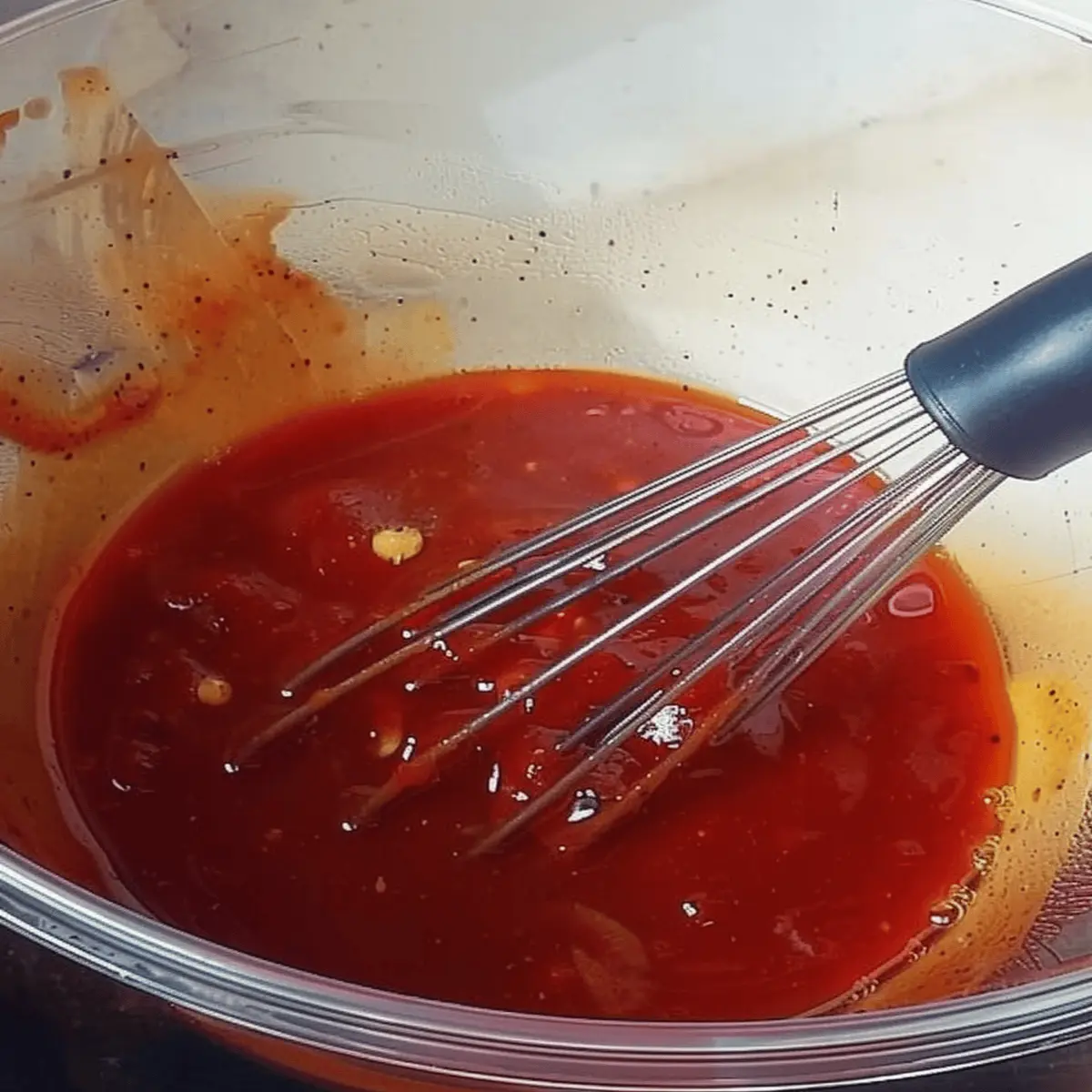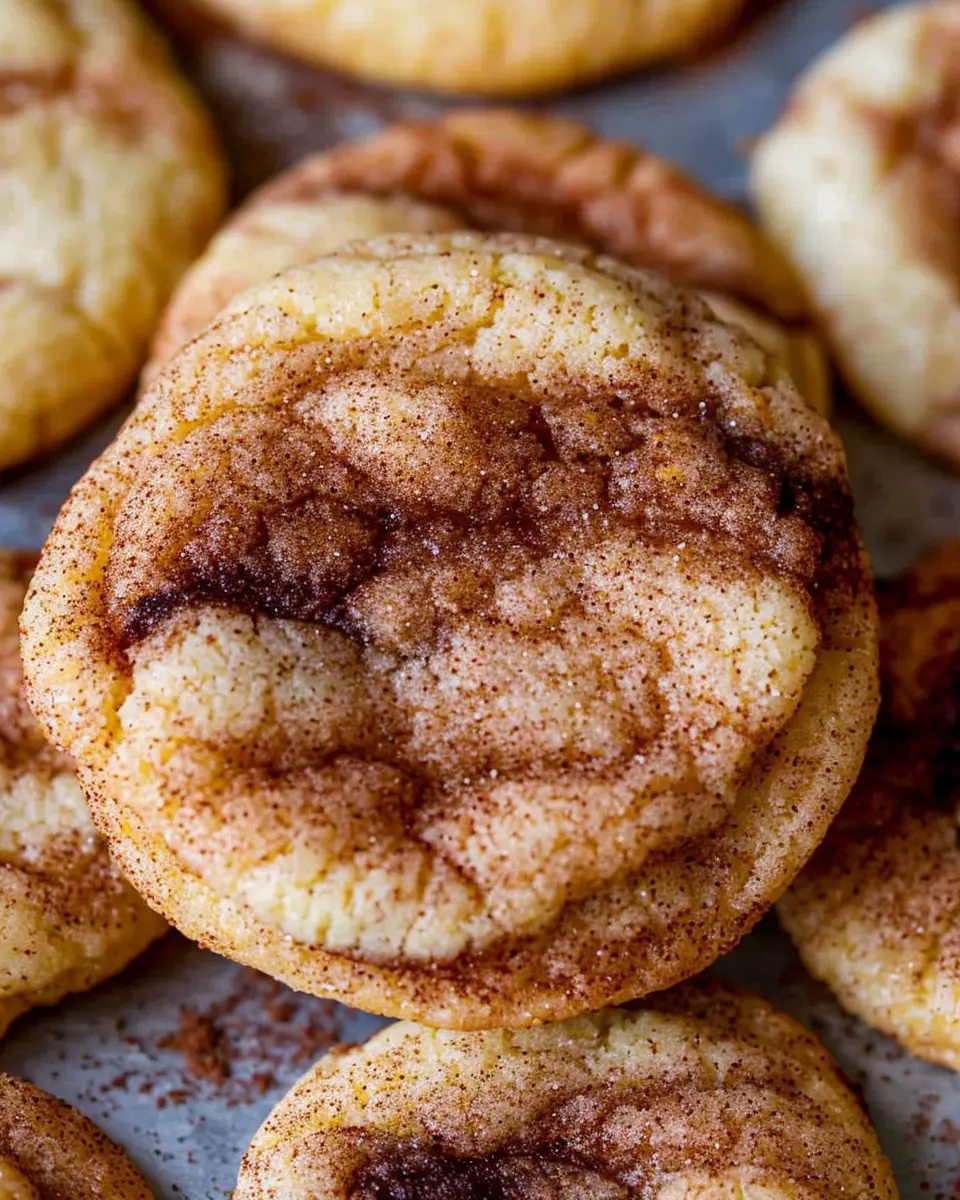Introduction to Chili Sauce
Chili sauce can transform even the most mundane meals into flavorful feasts. Whether drizzled over tacos, mixed into a stir-fry, or enjoyed as a dip alongside snacks, this versatile condiment packs a punch that can elevate your culinary creations. So, why should chili sauce deserve a special place in your kitchen? Let’s talk about it!
The Versatility of Chili Sauce
Firstly, chili sauce isn’t just about heat; it’s a blend of flavors that vary from tangy to sweet, smoky to savory. This versatility means it can cater to various dishes and palates. For instance, Sriracha, a popular type of chili sauce, adds a sweet and garlicky kick that complements everything from eggs to ramen. According to a 2018 report by Statista, specialty sauces like chili sauce are on the rise in popularity, highlighting the growing appreciation for bold flavors in home cooking.
Enhancing Dishes Effortlessly
Imagine your friends coming over for dinner. You whip up a simple chicken stir-fry but want it to shine. A few spoonfuls of chili sauce can elevate that dish from basic to unforgettable. It acts as a game-changer, bringing depth to your meal without requiring hours in the kitchen. Just think of the time you’ll save for more important things—like enjoying dinner with your loved ones!
Health Benefits Worth Noting
Beyond flavor, chili sauce can also offer some health benefits. Many chili sauces contain capsicum, which has been linked to various health perks, such as boosting metabolism and reducing inflammation. According to Healthline and its review of spicy foods, incorporating these fiery ingredients into your diet could potentially lead to better heart health and weight management.
Uniting Cultures through Flavor
Chili sauce is more than just a condiment; it’s a cultural experience. From the fiery salsas of Mexico to the rich chili pastes of Thailand, each variety tells a story and reflects regional culinary traditions. By adding chili sauce to your cooking, you’re embracing a world of flavors and connecting with diverse food cultures—what’s not to love about that?
So, whether you’re a foodie or just starting your culinary journey, having chili sauce on hand will not only spice up your meals but also inspire your creativity in the kitchen. Dive into the world of chili sauce, and you’ll soon wonder how you ever lived without it.
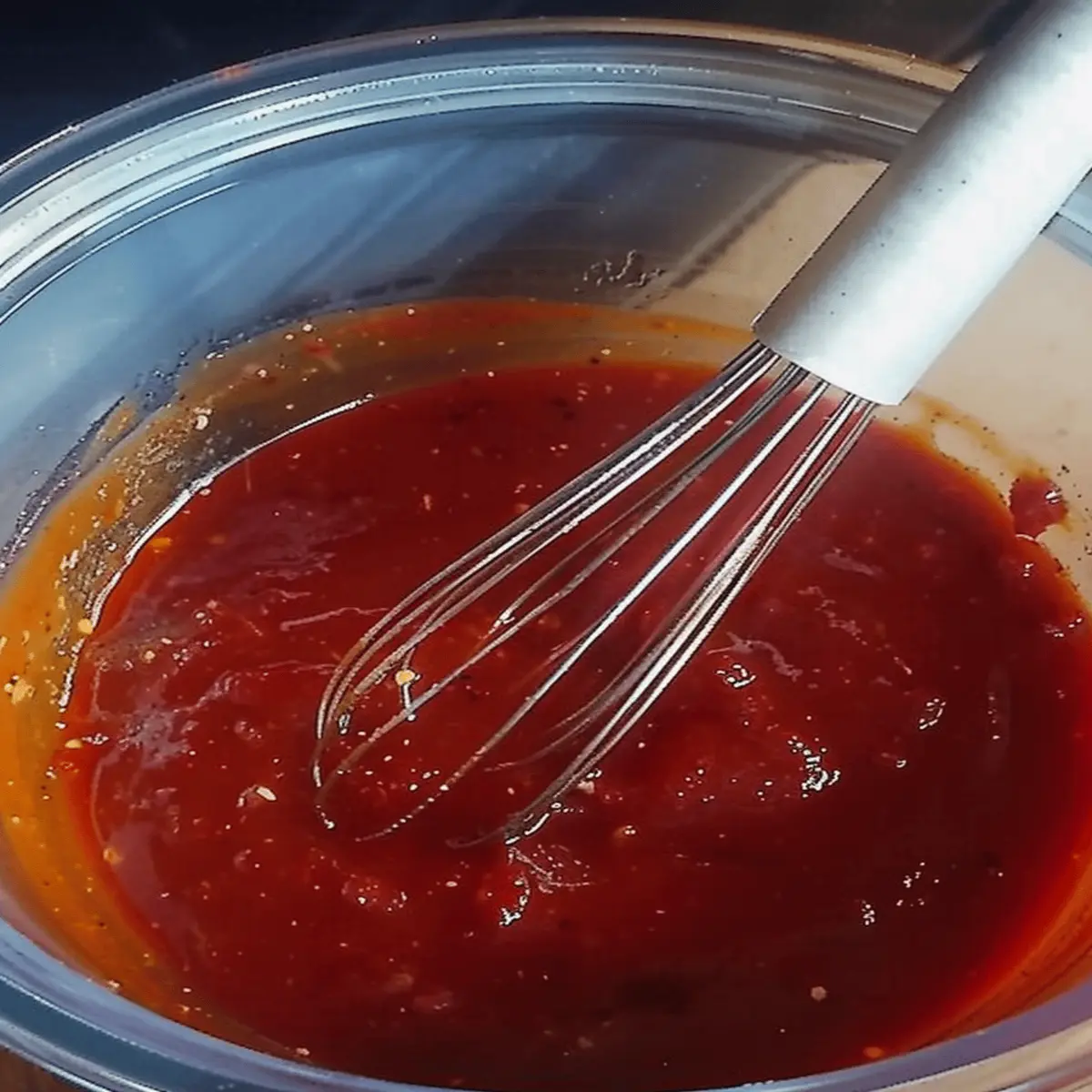
Ingredients for Chili Sauce
Creating the perfect chili sauce requires a balance of flavors that can elevate any dish. Whether you like it mild or fiery hot, the right ingredients are key. Here’s a handy list to get you started:
Essential Ingredients
- Tomatoes: Fresh or canned, tomatoes are the foundation of your sauce. They provide essential flavor and texture.
- Chili Peppers: Choose your favorite types—jalapeños for mild heat, or habaneros if you want a kick.
- Garlic and Onions: These aromatics add depth; finely chop or sauté them for a rich background flavor.
- Vinegar: A splash of vinegar—whether apple cider or white—gives your chili sauce that zingy brightness.
- Sugar: Just a touch of sugar helps balance the acidity of the tomatoes.
- Spices: Think cumin, paprika, or coriander for an earthy undertone. Don’t be afraid to experiment!
For more inspiration, don’t miss out on resources like Serious Eats and Bon Appétit where you can dive deep into the world of homemade sauces.
Next time you’re at the grocery store, you’ll know just what to grab! Happy cooking!
Step-by-Step Preparation of Chili Sauce
Creating your own chili sauce at home can be a rewarding experience. Not only is it a fun culinary project, but you also have control over the ingredients, making it healthier and tailored to your taste! Let’s dive into the preparation process.
Gather Your Fresh Ingredients
Before you start making your chili sauce, you need to gather all the fresh ingredients. Here’s what you will need:
- Fresh Chilies: Depending on your spice preference, you can use jalapeños, serranos, or even habaneros for a kick. Remember, the heat level varies considerably among different chili types!
- Tomatoes: Look for ripe, juicy tomatoes for a rich base. If you prefer, you can use canned tomatoes as well.
- Onion and Garlic: These aromatics will add depth to your flavor profile.
- Vinegar: This adds a tangy finish; apple cider vinegar works wonderfully.
- Spices: Common spices include cumin, smoked paprika, and sea salt.
- Herbs: Fresh cilantro or parsley can brighten up the flavors.
When you source your ingredients, consider visiting local farmers’ markets for the freshest produce. It’s not just better for taste; it also supports local agriculture. Check out resources like LocalHarvest.org to find markets near you.
Prepare and Chop the Vegetables
Once you have everything on hand, it’s time to get chopping. Prep your ingredients by:
- Washing: Thoroughly rinse your chilies, tomatoes, and herbs under cold water.
- Chopping: Dice your onions, mince the garlic, and chop the tomatoes. When it comes to chilies, remove the seeds if you prefer a milder sauce—keeping the seeds, though, can ramp up the heat.
- Organizing: Keep your work surface organized; group similar items together, which makes cooking smoother and more enjoyable.
It’s important to note that the size of your vegetable pieces will affect the cooking time. Smaller pieces will cook faster, leading to a more blended flavor in your chili sauce.
Sauté the Mix for Maximum Flavor
Now, let’s crank up the heat! Grab a large skillet or saucepan and add a splash of oil—olive oil works well here. Once the oil is hot, follow these steps:
- Add the Onions: Sauté for 2-3 minutes until they become translucent.
- Stir in the Garlic: Be careful! Garlic can burn quickly; stir it for about 30 seconds.
- Add Chilies and Tomatoes: Toss in your chopped chilies and tomatoes, allowing them to soften for about 5-7 minutes.
- Spices: Now is the time to sprinkle in your cumin, paprika, and salt. These flavors will develop beautifully as they cook together.
This step is vital; sautéing brings out the natural sweetness of your ingredients while building layers of flavor for your homemade chili sauce.
Blend for a Smooth Consistency
After the mixture has sautéed to perfection, it’s time to blend. Here’s how:
- Transfer to a Blender: Ensure it’s cool enough to handle; safety first!
- Puree Until Smooth: Blend until you reach your desired consistency. If you like a chunkier sauce, pulse a few times instead of blending continuously.
- Taste Test: This is the moment to see if you need to tweak any flavors. Maybe a bit more salt? Just a touch of sugar to balance the acidity?
Personalizing your sauce at this stage is part of the fun!
Simmer and Adjust Seasoning
Pour the blended sauce back into your saucepan and bring it to a gentle simmer. This helps to meld all those flavors beautifully. Allow it to simmer for about 15-20 minutes. If you’re looking for a thicker sauce, let it bubble away a little longer.
During this simmering phase, don’t forget to keep tasting and adjusting. Add more vinegar for tang, maybe a bit of honey or sugar if it’s too acidic, or even more spices for a punch. A little pinch of creativity can elevate your chili sauce from very good to great!
Once you’re satisfied with the taste and texture, you’re ready to enjoy your homemade chili sauce. It can be stored in airtight containers in the fridge for up to a week, or you can try canning it for longer shelf life.
Creating the perfect chili sauce is both an art and a science, so embrace the journey and have fun with it!
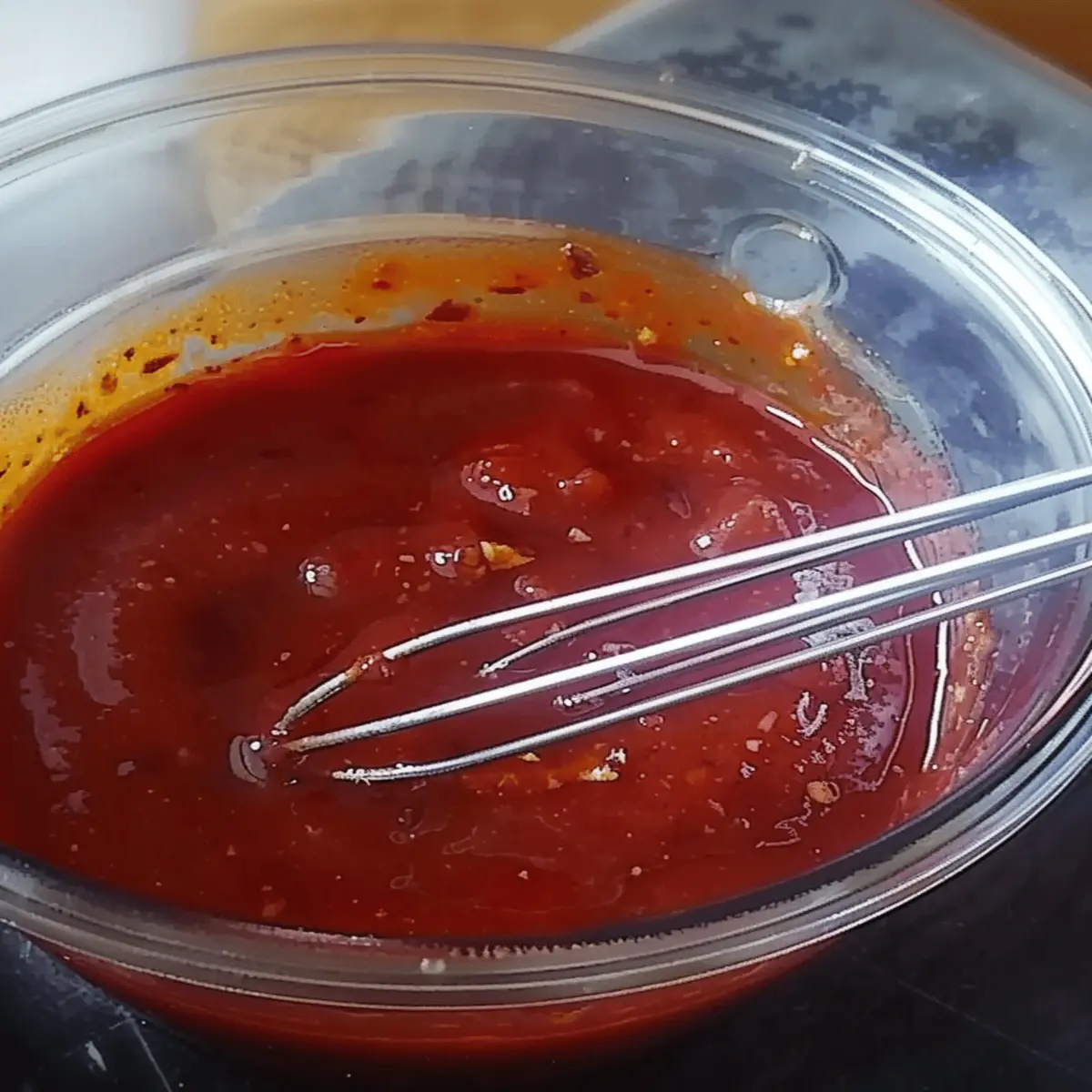
Variations of Chili Sauce
Chili sauce is incredibly versatile, and experimenting with its flavors can elevate your meals in delightful ways. Here are three variations you might consider trying out.
Sweet Chili Sauce
Sweet chili sauce is a favorite for those who prefer a milder and slightly sweeter option. This sauce typically combines sugar, vinegar, and chili peppers, creating a sticky, glossy condiment perfect for dipping spring rolls or chicken nuggets. The sweetness balances the heat of the chilies, making it ideal for those who may find traditional chili sauces too fiery. Many Asian restaurants serve this sauce as a staple, and making it at home is surprisingly simple. You can find extensive recipes online, like those from Serious Eats.
Garlic Chili Sauce
If you love the robust flavor of garlic, then garlic chili sauce is your go-to. This variant offers a savory kick thanks to its hearty mix of chilies, garlic, and vinegar. It’s often used in Asian cuisine and pairs wonderfully with roasted vegetables, meats, or even as a zesty addition to dressings. The depth of flavor from the garlic elevates this sauce, enhancing any dish it touches. Plus, garlic is known for its health benefits, including boosting your immune system, making this sauce a tasty and health-conscious choice.
Spicy Mango Chili Sauce
For a tropical twist, spicy mango chili sauce brings an exciting fruitiness to the table. Made with fresh mango purée, chili peppers, and a hint of lime, this sauce strikes a perfect balance between sweet and spicy. It’s delightful as a glaze for grilled chicken or fish, offering a unique flavor profile that can impress your guests. If you’re curious about how to whip this up at home, check out simple recipes from Food Network that guide you step-by-step.
These variations prove that chili sauce is not just a condiment; it’s a creative canvas for culinary exploration. Whether you’re hosting a dinner party or just want to spice up your weekday meals, these sauces can transform your dishes and tantalize your taste buds. Who knows, you might just discover your new favorite flavor!
Cooking Tips and Notes for Chili Sauce
How to Intensify the Flavor
If you want to take your chili sauce to the next level, consider incorporating a few power ingredients. Adding a splash of vinegar—like apple cider or red wine—can brighten the flavor. For that smoky essence, try including smoked paprika or chipotle peppers. Additionally, letting your sauce simmer longer allows the flavors to meld beautifully, creating a robust taste profile. Did you know that a touch of sugar can balance out acidity? It’s a chef’s secret!
How to Store Your Chili Sauce
Proper storage can make your homemade chili sauce last longer while keeping its punch intact. Once cooled, transfer your sauce to airtight containers. Glass jars are perfect for this! Refrigerate, and your sauce will stay fresh for up to two weeks. For longer storage, consider freezing it in ice cube trays. That way, you’ll have ready-made flavor boosters whenever you need them! If you’re curious about best practices for homemade sauces, check out this Food Safety guide to help you keep your creations safe.
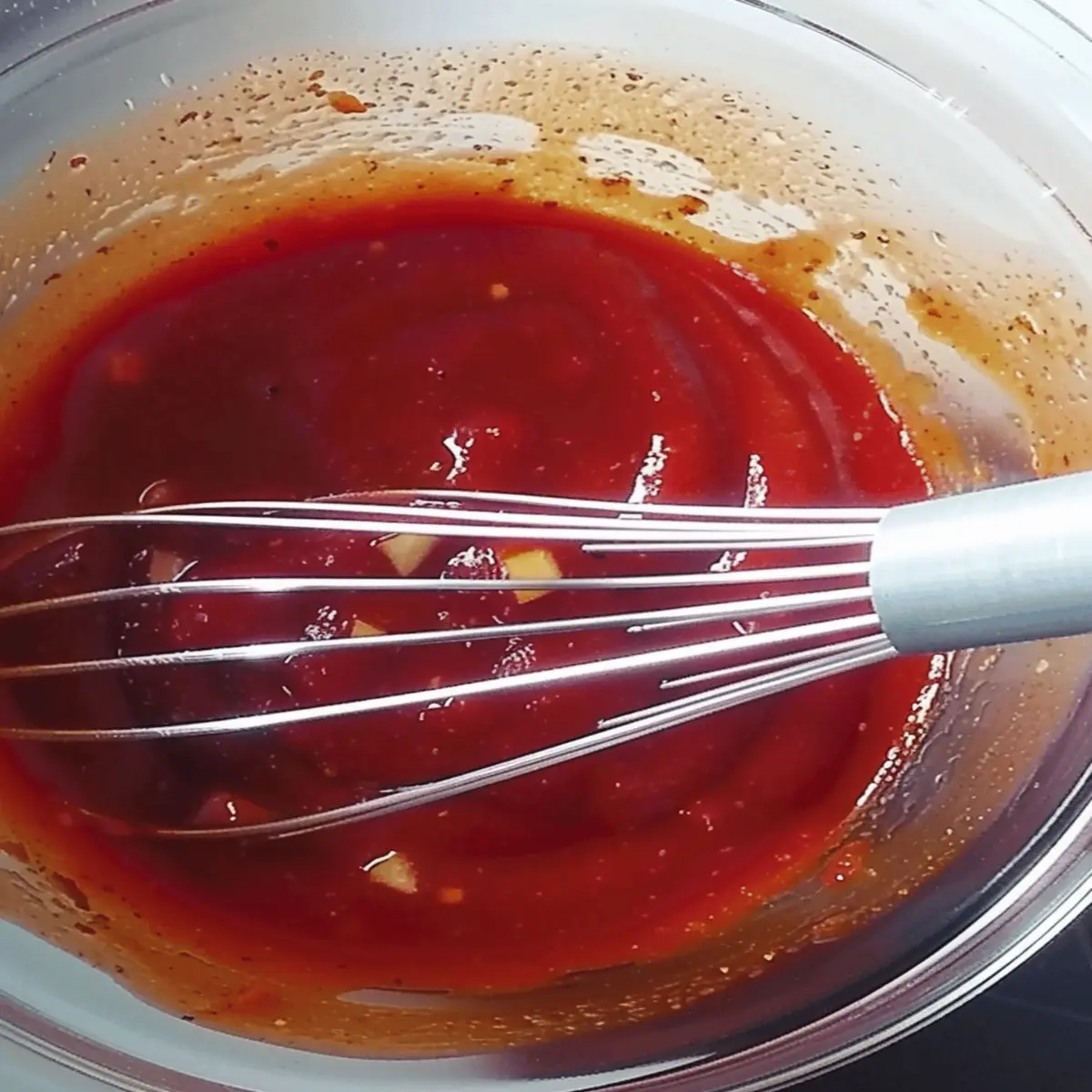
Serving Suggestions for Chili Sauce
When it comes to chili sauce, the possibilities are endless! Here are some delightful ways to elevate your meals.
As a Marinade for Meats
Using chili sauce as a marinade for chicken, pork, or beef can transform your ordinary meal into something extraordinary. Simply combine your favorite sauce with olive oil, garlic, and a splash of lime juice. Let your meat marinate for at least an hour (or overnight for maximum flavor) before grilling or baking. This method not only infuses your meat with flavor but also helps to tenderize it. Did you know that marinating can increase the juiciness of meats by up to 10%?
Drizzled on Tacos
Tacos are the ultimate canvas for creativity. A drizzle of chili sauce adds a zesty kick to any taco filling, whether it’s seasoned beef, grilled veggies, or black beans. Consider complementing it with fresh cilantro and a squeeze of lime for a refreshing touch. This simple addition can elevate your taco night into a delightful culinary experience.
Added to Stir-Fries
Stir-fries are quick and versatile, making them perfect for busy weeknights. Add chili sauce to your stir-fried veggies and proteins for an instant flavor boost. Many chefs suggest mixing it with soy sauce or sesame oil for an irresistible umami kick. It’s an excellent way to spice up your meal and pack in some extra heat!
These easy serving suggestions not only enhance your dishes but also invite you to get creative in the kitchen. For more ideas, check out resources like Chili Pepper Madness for inspiration and tips. Happy cooking!
Time Breakdown for Chili Sauce
Preparation time
When embarking on your chili sauce journey, you’ll need about 10-15 minutes to gather your ingredients and prep your veggies. Chopping, measuring, and arranging everything will set you up for success.
Cooking time
The magic happens during cooking, which typically takes around 30-40 minutes. This is when the flavors meld together and create that irresistible taste. You might even be tempted to sneak a taste while it simmers—don’t worry, I won’t tell!
Total time
In total, you’re looking at approximately 40-55 minutes from start to finish. This gives you a delicious homemade chili sauce ready for any dish—perfect for a weeknight dinner or a weekend barbecue.
If you’re curious about spice levels and flavor profiles, check out the Food Network’s guide on chili sauces to explore the world of heat and taste! Whether you prefer mild or extra spicy, this time invested will yield a sauce that’s truly worth it.
Nutritional Facts for Chili Sauce
When you’re reaching for that bottle of chili sauce, it’s good to know what you’re adding to your meals. Let’s break down some important nutritional facts to help you enjoy it guilt-free!
Calories
A standard tablespoon of chili sauce typically contains around 15-25 calories. It’s a low-calorie way to spice up your dishes, making it a convenient option for those monitoring their energy intake.
Carbohydrates
You’ll find about 2-3 grams of carbohydrates in the same serving of chili sauce. This makes it a great addition for low-carb diets. These carbs mostly come from sugars, so moderation is key—especially if you’re watching your intake.
Sodium
Chili sauce can be a little high in sodium, offering 200-300 mg per tablespoon. Keep this in mind if you’re monitoring your sodium levels. Incorporating fresh ingredients or homemade versions can help you control the salt content!
Exploring homemade options? Check out these chili sauce recipes for more control over your ingredients! Understanding the nutritional profile of chili sauce can transform your culinary experience while keeping your health in check.
FAQ about Chili Sauce
What can I use instead of fresh chilies?
If you find yourself fresh out of chilies, don’t worry! There are several substitutes you can try. Dried chilies, such as crushed red pepper flakes or chili powder, are great alternatives and will still pack a punch. For a milder option, consider using bell peppers, jalapeños, or even hot sauce to enhance your dish’s flavor. Just keep in mind that the heat intensity can vary, so adjust according to your palate.
How long does homemade chili sauce last?
Homemade chili sauce is not only delicious but also convenient! Typically, it lasts about one to two weeks in the refrigerator when stored in an airtight container. For longer storage, consider freezing it in ice cube trays for easy portioning. Just pop a cube into your next meal whenever you want a spicy kick! You can find more tips on storage safety at resources like the Food Safety and Inspection Service for a deeper dive into food preservation.
Can I make chili sauce without sugar?
Absolutely! If you’re aiming to make a healthier version of chili sauce, just skip the sugar. Instead, you can incorporate natural sweeteners like honey or agave syrup if you desire a touch of sweetness. Or, use carrots or bell peppers blended into the sauce for a hint of natural sweetness without the added sugars. This adjustment not only maintains the rich flavor profile but can also make your chili sauce far more satisfying!
Feel free to experiment with your ingredients and discover what works best for your taste buds!
Conclusion on Chili Sauce
Embrace the Versatility of Chili Sauce in Your Meals
Chili sauce is more than just a condiment; it’s a culinary companion that elevates dishes to new heights. Whether you’re spicing up a stir-fry or adding a kick to your tacos, the possibilities are endless. Studies show that incorporating spicy flavors can enhance the overall eating experience, making meals memorable.
Think about your own favorite dishes. Wouldn’t a drizzle of chili sauce elevate your mundane weeknight dinners?
Consider these ideas for using chili sauce in everyday meals:
- Marinades: Perfect for grilling chicken or tofu.
- Soups & Stews: Just a spoonful can transform your broth.
- Dips & Spreads: Blend with cream cheese for a flavorful appetizer.
Explore more about how heat can enhance your meals at ChiliPepperMadness. So go ahead, experiment, and discover how chili sauce can awaken your culinary creativity!
Print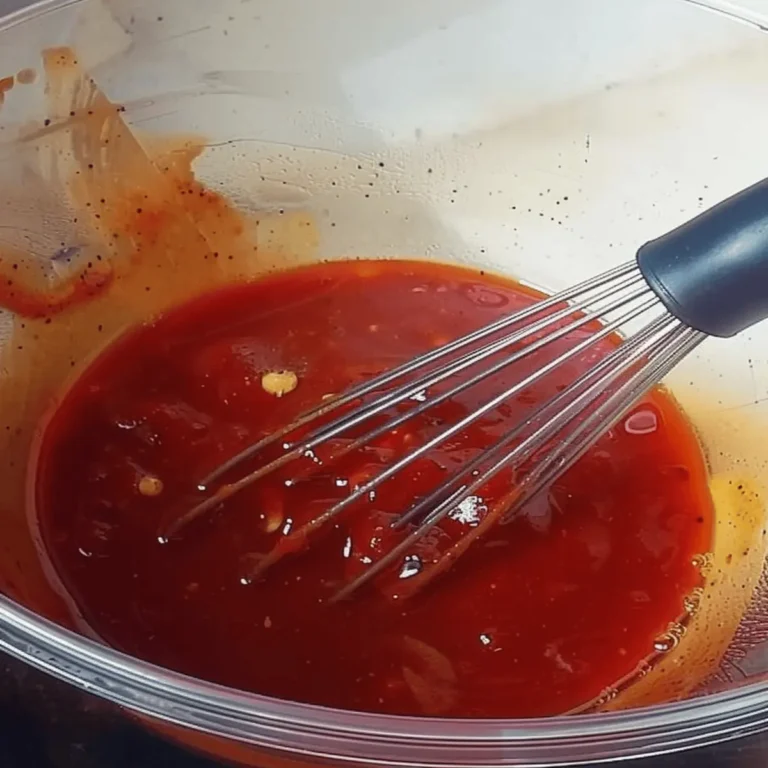
Chili Sauce Magic: Your Best Secret for Flavorful Dishes
A delicious chili sauce that enhances the flavor of any dish.
- Total Time: 25 minutes
- Yield: 2 cups 1x
Ingredients
- 2 cups fresh chili peppers
- 1 cup vinegar
- 1/2 cup sugar
- 1 tablespoon garlic, minced
- 1 teaspoon salt
Instructions
- Wash the chili peppers and remove stems.
- Combine chili peppers, vinegar, sugar, garlic, and salt in a blender.
- Puree the mixture until smooth.
- Transfer to a saucepan and simmer for 10 minutes.
- Cool and pour into sterilized bottles.
Notes
- If you prefer a milder sauce, use fewer chili peppers.
- Add more sugar for sweetness as needed.
- Prep Time: 15 minutes
- Cook Time: 10 minutes
- Category: Condiments
- Method: Blending and simmering
- Cuisine: Global
- Diet: Vegan
Nutrition
- Serving Size: 1 tablespoon
- Calories: 15
- Sugar: 4g
- Sodium: 100mg
- Fat: 0g
- Saturated Fat: 0g
- Unsaturated Fat: 0g
- Trans Fat: 0g
- Carbohydrates: 4g
- Fiber: 0g
- Protein: 0g
- Cholesterol: 0mg
Keywords: Chili Sauce

